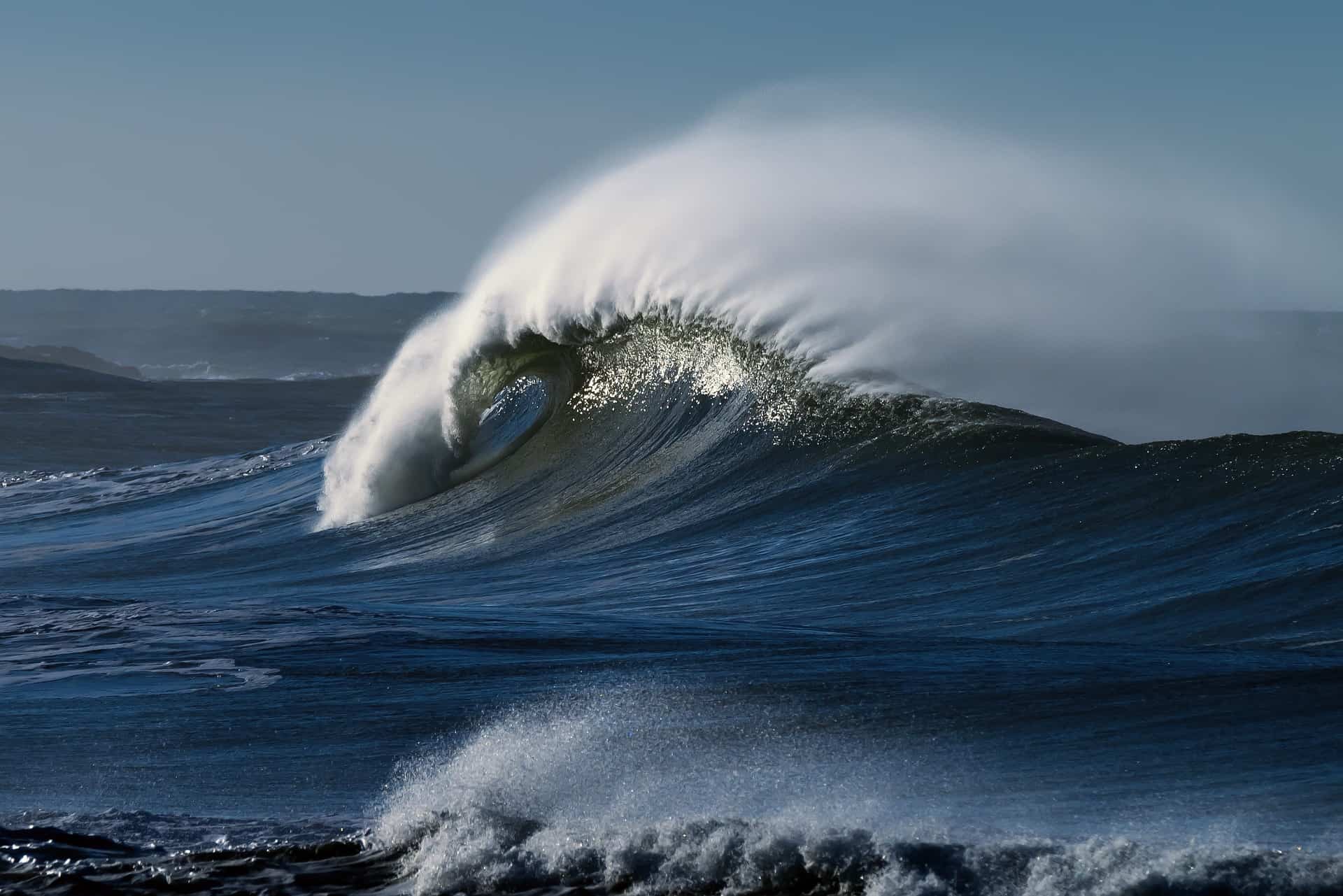Editor's Notes: "The Mighty Pacific: Exploring the World's Largest Ocean" have published today date. This is important to read because it can help you learn more about the largest ocean in the world and its importance to the planet.
Our team has analyzed the information and put together this guide to help you learn more about the Mighty Pacific: Exploring the World's Largest Ocean.
| Property | Value |
|---|---|
| Ocean | Pacific Ocean |
| Name | The Mighty Pacific: Exploring the World's Largest Ocean |
| Area | 165,250,000 square kilometers (63,803,000 square miles) |
| Volume | 714,000,000 cubic kilometers (171,446,000 cubic miles) |
Main article topics:
- The geography of the Pacific Ocean
- The climate of the Pacific Ocean
- The wildlife of the Pacific Ocean
- The history of the Pacific Ocean
- The future of the Pacific Ocean
The Pacific Ocean is the largest ocean in the world, covering over 63 million square kilometers. It is home to a wide variety of marine life, including fish, whales, dolphins, and sharks. The Pacific Ocean also plays an important role in the global climate system.
Name the world's largest ocean? Tell... - Golden Era Academy - Source www.facebook.com
The geography of the Pacific Ocean
The Pacific Ocean is divided into two major basins: the North Pacific Basin and the South Pacific Basin. The North Pacific Basin is bounded by the North American continent to the east, the Asian continent to the west, and the Arctic Ocean to the north. The South Pacific Basin is bounded by the South American continent to the east, the Australian continent to the west, and the Antarctic continent to the south.
The Pacific Ocean is the deepest ocean in the world, with an average depth of about 4,000 meters (13,000 feet). The deepest point in the Pacific Ocean is the Mariana Trench, which is over 11,000 meters (36,000 feet) deep.
FAQ
This FAQ section provides insightful answers to commonly asked questions about the mighty Pacific Ocean, offering a comprehensive understanding of the world's largest body of water.
Question 1: What is the geographical extent and size of the Pacific Ocean?
The Pacific Ocean spans an expansive area of 165.25 million square kilometers (63.8 million square miles), stretching from the Americas in the east to Asia and Australia in the west. It encompasses approximately 46% of Earth's total water surface and holds more than half of the planet's liquid water.

Top 15 Pacific Ocean Facts - Nature, Economy, History & More | Facts.net - Source facts.net
Question 2: What is the significance of the Pacific Ocean in global climate patterns?
The Pacific Ocean plays a crucial role in regulating Earth's climate. Its vast expanse absorbs and stores immense amounts of solar radiation, influencing atmospheric circulation patterns. Additionally, the El Niño-Southern Oscillation (ENSO) cycle, a natural climate phenomenon originating in the Pacific, significantly affects weather patterns worldwide.
Question 3: How does the Pacific Ocean influence Earth's biodiversity?
The Pacific Ocean is renowned for its unparalleled biodiversity, hosting a staggering array of marine life. From microscopic plankton to colossal whales, the ocean's diverse ecosystems provide essential habitats and resources for countless species. The Pacific also serves as a vital migratory corridor for marine animals, connecting ecosystems across vast distances.
Question 4: What are the environmental challenges facing the Pacific Ocean?
The Pacific Ocean faces numerous environmental threats, including climate change, pollution, and overfishing. Rising ocean temperatures, acidification, and sea-level rise pose significant risks to marine ecosystems and coastal communities. Pollution, particularly plastic waste, poses a grave threat to marine life, while overfishing depletes vital fish populations.
Question 5: How is the Pacific Ocean connected to human history and culture?
The Pacific Ocean has played a pivotal role in human history, facilitating exploration, trade, and cultural exchange for centuries. Ancient Polynesian voyagers navigated its vast expanse, establishing settlements across the Pacific islands. Today, the ocean continues to serve as a vital resource for fishing, transportation, and recreation.
Question 6: What are the ongoing efforts to conserve and protect the Pacific Ocean?
Numerous international and national initiatives are underway to protect the Pacific Ocean. These include the Pacific Ocean Alliance, the Convention on Biological Diversity, and the United Nations Sustainable Development Goals. Collaborative efforts focus on reducing pollution, mitigating climate change impacts, enforcing sustainable fishing practices, and conserving marine ecosystems.
Ultimately, safeguarding the Pacific Ocean is crucial for the health and well-being of both marine life and human societies. By understanding its vastness, significance, and vulnerability, we can contribute to its conservation and ensure its continued existence for generations to come.
Continue reading: Exploring the Depths: Unraveling the Pacific Ocean's Mysteries
Tips
Discover the depths of the largest ocean in the world with The Mighty Pacific: Exploring The World's Largest Ocean and uncover its vastness, ecosystems, and profound impact on the planet.
Tip 1: Delve into the Pacific's Origin and Formation
Understanding the geological forces that shaped the Pacific Ocean provides a window into the Earth's dynamic history. Explore how tectonic plate movements, volcanic eruptions, and seafloor spreading contributed to its formation, revealing the ocean's evolutionary journey.
Tip 2: Discover a Symphony of Ecosystems
The Pacific is home to an awe-inspiring array of ecosystems, each teeming with unique biodiversity. From vibrant coral reefs teeming with marine life to expansive kelp forests that provide shelter and sustenance, immerse yourself in the interconnectedness and diversity of these underwater worlds.
Tip 3: Trace the Ocean's Currents
The Pacific's currents are a lifeline for the planet, driving weather patterns, transporting nutrients, and shaping global ecosystems. Follow the paths of major currents like the Kuroshio and the North Pacific Gyre, understanding their profound influence on climate, fisheries, and marine life.
Tip 4: Uncover the Pacific's Role in Climate Regulation
The Pacific Ocean plays a pivotal role in regulating global climate. Dive into the mechanisms by which it absorbs carbon dioxide, mitigating atmospheric concentrations and stabilizing temperatures. Explore how understanding the ocean's carbon cycling is crucial for predicting and mitigating climate change impacts.
Tip 5: Explore the Pacific's Cultural and Historical Significance
The Pacific Ocean has been a crossroads for human exploration, trade, and cultural exchange throughout history. Trace the voyages of Polynesian navigators, discover the impact of European colonization, and learn about the indigenous communities that have shaped the Pacific's cultural heritage.
By immersing yourself in the vastness and depth of The Mighty Pacific: Exploring The World's Largest Ocean, you will gain invaluable insights into the planet's largest body of water, its intricate ecosystems, and its profound impact on our world.
The Mighty Pacific: Exploring The World's Largest Ocean
The Pacific Ocean, the world's largest, holds many secrets and wonders within its vast expanse. From its historical exploration to its abundant biodiversity, understanding its key aspects provides insights into the significance of this colossal body of water.
- Early Explorations: From Magellan to Balboa, significant voyages shaped our knowledge of the Pacific.
- Size and Depth: Its immense size and extreme depths are defining characteristics of the Pacific.
- Islands and Archipelagos: Dotted across the ocean lie countless islands, each with its unique ecosystem.
- Marine Biodiversity: The Pacific is home to a staggering array of marine life, from tiny zooplankton to colossal whales.
- Economic Importance: Fishing, shipping, and tourism contribute significantly to economies across the Pacific Rim.
- Environmental Concerns: Pollution, climate change, and overfishing pose threats to the Pacific's delicate ecosystems.
These aspects showcase the interconnectedness of history, geography, biology, economics, and environmental considerations. The Pacific Ocean is a vital part of our planet, providing resources, shaping climate patterns, and supporting a diverse range of life. By understanding these key aspects, we gain a deeper appreciation for the immense power and ecological fragility of the world's largest ocean.

Gallery of URB Reveals World’s Largest Ocean Restoration Project in - Source www.archdaily.com

It might be the world's biggest ocean, but the mighty Pacific is in - Source mappingignorance.org
The Mighty Pacific: Exploring The World's Largest Ocean
The Pacific Ocean, the world's largest and deepest, covers nearly a third of the Earth's surface. Its vastness and depth have a profound effect on our planet's climate, weather patterns, and marine ecosystems. Exploring this mighty body of water provides invaluable insights into the functioning of our planet and the delicate balance that sustains life within it.

The World’s Largest Ocean and the Tiniest of Birds | Kim Smith Films - Source kimsmithdesigns.com
The Pacific Ocean plays a pivotal role in regulating the Earth's climate. Its surface waters absorb and store vast amounts of heat from the sun, which is then released slowly over time. This process helps to moderate global temperatures and reduce the severity of extreme weather events.
The Pacific Ocean's depth and complex topography also create diverse marine habitats, supporting an astonishing array of marine life. From tiny plankton to massive whales, the Pacific Ocean is home to a significant proportion of the Earth's marine biodiversity. These ecosystems provide essential resources for human populations, including food, medicine, and economic opportunities.
Understanding the complex interactions within the Pacific Ocean is crucial for managing its resources sustainably and mitigating the impacts of human activities on this vital ecosystem. Scientific exploration, conservation efforts, and international cooperation are all essential to ensure the health and vitality of the Mighty Pacific for generations to come.
Conclusion
The Mighty Pacific: Exploring the World's Largest Ocean has shed light on the immense importance of the Pacific Ocean to our planet. Its vastness and depth influence global climate patterns, while its diverse ecosystems support a wealth of marine life. Understanding the intricate workings of this mighty body of water is paramount to ensuring its health and the well-being of the communities that depend on it.
As we continue to explore the mysteries of the Pacific Ocean, we must remain committed to protecting and preserving its delicate balance. Only through sustained scientific research, responsible resource management, and international cooperation can we safeguard the Mighty Pacific for generations to come.
